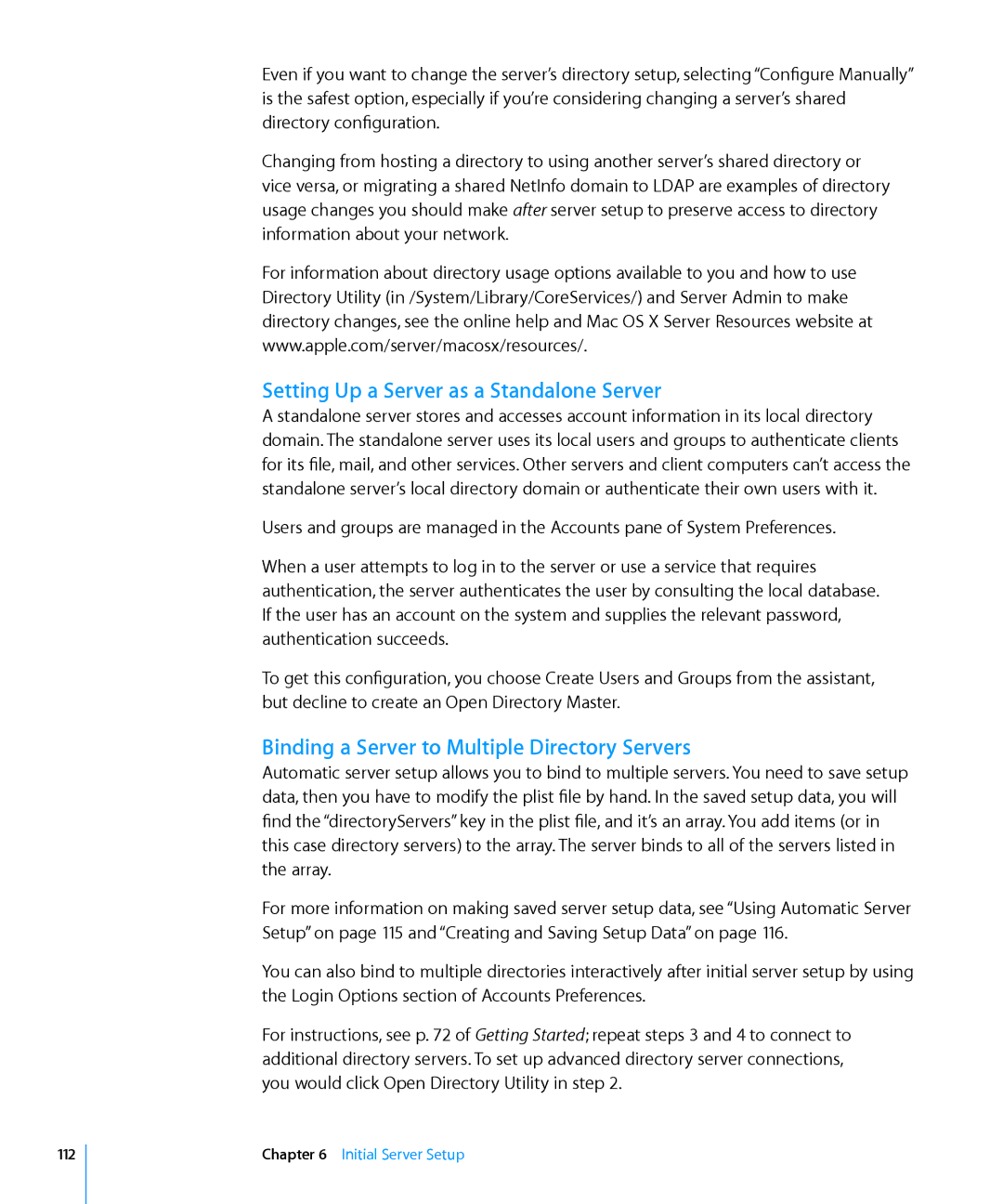Even if you want to change the server’s directory setup, selecting “Configure Manually” is the safest option, especially if you’re considering changing a server’s shared directory configuration.
Changing from hosting a directory to using another server’s shared directory or vice versa, or migrating a shared NetInfo domain to LDAP are examples of directory usage changes you should make after server setup to preserve access to directory information about your network.
For information about directory usage options available to you and how to use Directory Utility (in /System/Library/CoreServices/) and Server Admin to make directory changes, see the online help and Mac OS X Server Resources website at www.apple.com/server/macosx/resources/.
Setting Up a Server as a Standalone Server
A standalone server stores and accesses account information in its local directory domain. The standalone server uses its local users and groups to authenticate clients for its file, mail, and other services. Other servers and client computers can’t access the standalone server’s local directory domain or authenticate their own users with it.
Users and groups are managed in the Accounts pane of System Preferences.
When a user attempts to log in to the server or use a service that requires authentication, the server authenticates the user by consulting the local database. If the user has an account on the system and supplies the relevant password, authentication succeeds.
To get this configuration, you choose Create Users and Groups from the assistant, but decline to create an Open Directory Master.
Binding a Server to Multiple Directory Servers
Automatic server setup allows you to bind to multiple servers. You need to save setup data, then you have to modify the plist file by hand. In the saved setup data, you will find the “directoryServers” key in the plist file, and it’s an array. You add items (or in this case directory servers) to the array. The server binds to all of the servers listed in the array.
For more information on making saved server setup data, see “Using Automatic Server Setup” on page 115 and “Creating and Saving Setup Data” on page 116.
You can also bind to multiple directories interactively after initial server setup by using the Login Options section of Accounts Preferences.
For instructions, see p. 72 of Getting Started; repeat steps 3 and 4 to connect to additional directory servers. To set up advanced directory server connections, you would click Open Directory Utility in step 2.
112
Chapter 6 Initial Server Setup
